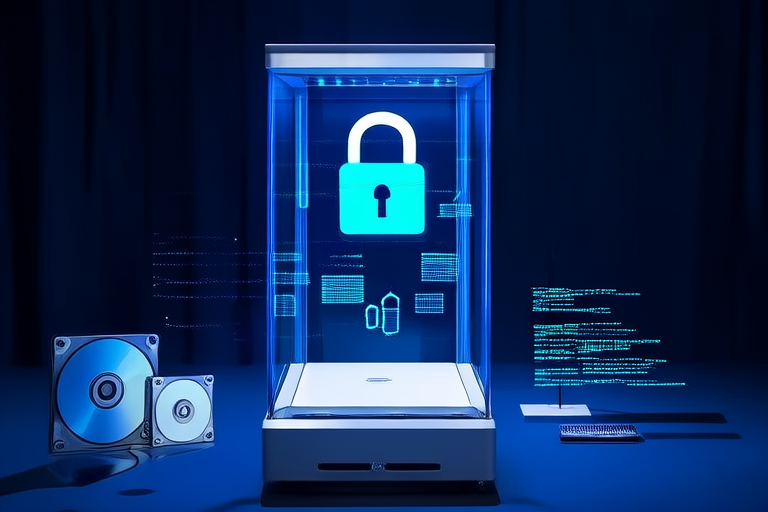“`html
Data Breaches: Understanding Risks and Implementing Prevention Measures
Introduction
Data breaches have become an increasingly common and concerning issue in today’s digital age. A data breach occurs when unauthorized individuals gain access to sensitive or confidential information. This can include personal data, financial records, intellectual property, and more. The frequency and severity of these breaches have risen dramatically over the past few years, making it crucial for both individuals and organizations to understand the risks involved and implement effective prevention measures.
The consequences of data breaches can be far-reaching, affecting not only the immediate victims but also the reputation and financial stability of the breached entity. Therefore, it is essential to take proactive steps to safeguard against such incidents.
Understanding Data Breaches
Definition and Scope
A data breach refers to any instance where sensitive or protected information is accessed or disclosed without authorization. This could involve various types of data, including personal information (such as names, addresses, and Social Security numbers), financial details (like credit card numbers and bank account information), and intellectual property (such as trade secrets and proprietary research).
Recent high-profile examples of data breaches include the Equifax breach in 2017, which exposed the personal information of approximately 147 million consumers, and the Yahoo breach in 2013, which compromised the accounts of nearly all three billion users.
Common Causes of Data Breaches
- Human Error: Accidental exposure of data, such as sending emails to the wrong recipient, or falling victim to phishing attacks.
- Weak Security Practices: Poor password management, lack of encryption, and failure to keep software updated can create vulnerabilities that hackers exploit.
- Malicious Intent: Hacking attempts by external attackers or insider threats, where individuals with authorized access misuse their privileges.
Consequences of Data Breaches
- Financial Losses: Organizations may face substantial costs related to investigations, legal fees, and compensation payouts to affected individuals.
- Reputational Damage: Trust erosion among customers, partners, and investors can lead to long-term business challenges.
- Legal and Regulatory Implications: Non-compliance with data protection regulations (such as GDPR or CCPA) can result in hefty fines.
- Potential Impact on Customers and Stakeholders: Individuals whose data has been compromised may suffer identity theft, fraud, or other negative outcomes.
Implementing Prevention Measures
Strengthening Security Practices
- Strong, Unique Passwords: Use complex passwords that are difficult to guess and avoid reusing them across different accounts. Enable multi-factor authentication wherever possible.
- Regular Updates: Keep all software and systems up-to-date with the latest patches and security updates to close known vulnerabilities.
- Robust Access Controls: Implement strict access policies and ensure proper user authentication mechanisms are in place to limit who can access sensitive information.
Employee Training and Awareness
- Cybersecurity Training: Conduct regular training sessions to educate employees about potential threats and how they can protect themselves and the organization.
- Phishing Scams: Train employees to recognize phishing emails and other social engineering tactics used by attackers.
- Culture of Security: Foster a culture where security is everyone’s responsibility and encourage open discussions about potential risks.
Data Protection Technologies
- Encryption: Use encryption to protect sensitive data both at rest and in transit. This ensures that even if data is intercepted, it remains unreadable to unauthorized parties.
- Intrusion Detection Systems (IDS): Deploy IDS and firewalls to monitor network traffic and detect suspicious activity, helping to block unauthorized access.
- Data Loss Prevention (DLP): Implement DLP tools to prevent sensitive information from being accidentally or maliciously shared outside the organization.
Incident Response Planning
- Comprehensive Incident Response Plan: Develop a detailed plan outlining the steps to be taken in case of a data breach, including containment, investigation, and recovery.
- Regular Drills: Test the effectiveness of your incident response plan through regular drills and simulations to ensure readiness.
- Timely Communication: Establish protocols for communicating with affected parties and relevant authorities in a timely and transparent manner.
Conclusion
Data breaches pose significant risks to individuals and organizations alike. By understanding the nature of these breaches and implementing robust prevention measures, we can significantly reduce the likelihood and impact of such incidents. It is crucial to adopt a proactive approach, staying informed about evolving threats and continuously updating our strategies to protect sensitive information.
Remember, the best defense against data breaches is a combination of strong security practices, vigilant monitoring, and a culture of awareness and preparedness. Stay informed, stay secure!
“`




